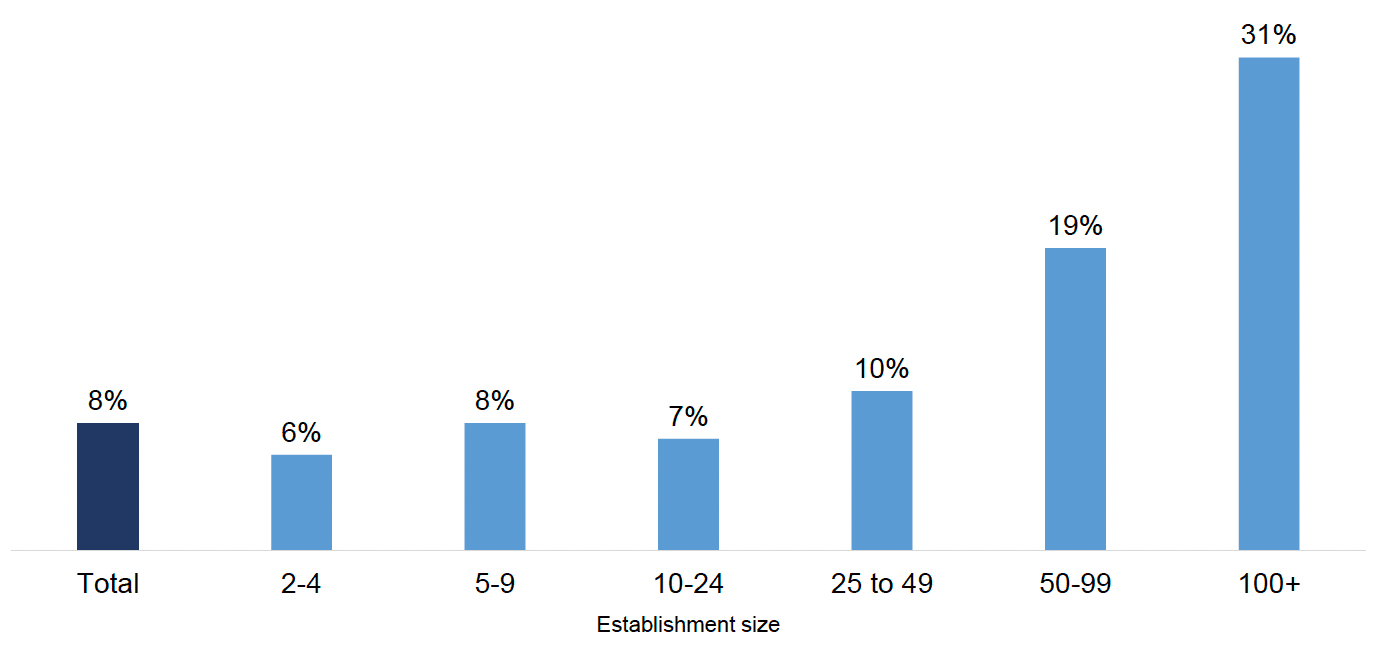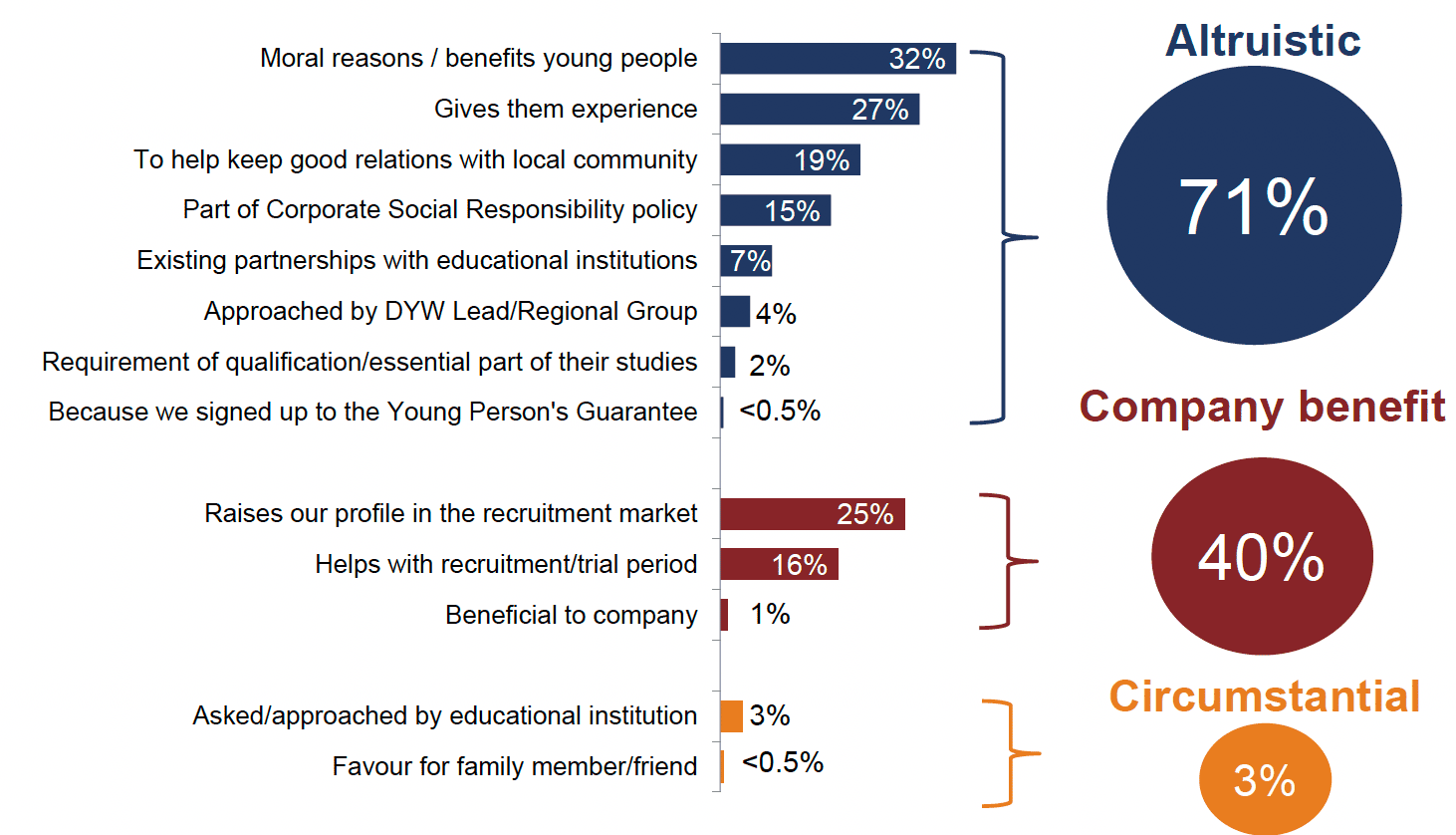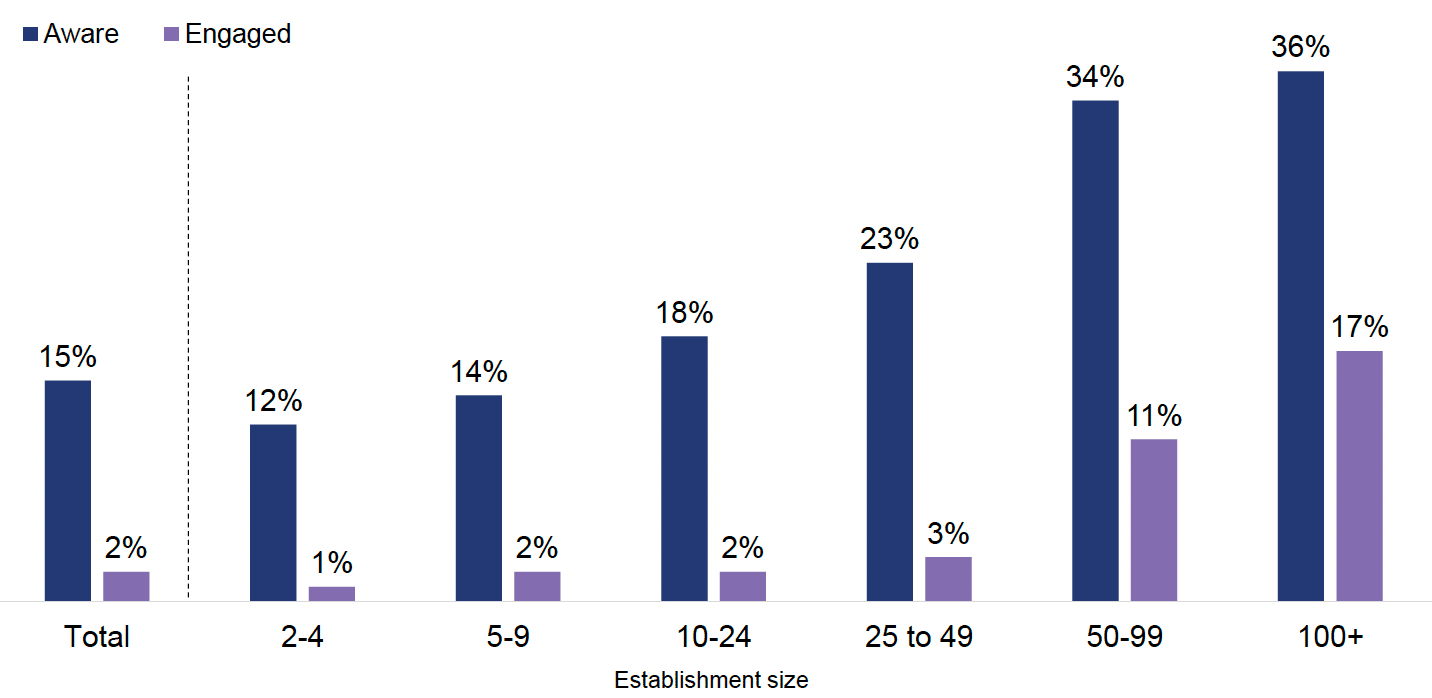Scottish Employer Perspectives Survey 2021
Results from the 2021 Scottish Employer Perspectives Survey.
Developing the Young Workforce (DYW)
This chapter focuses on DYW, the Scottish Government's youth employment strategy, which aims to prepare young people for the world of work. The chapter also provides evidence for the delivery of the Young Person's Guarantee, which aims to connect every 16 to 24 year old in Scotland to an opportunity. This could be a job, apprenticeship, further or higher education, training programme, volunteering or enterprise opportunity.
21 employer-led DYW Regional Groups have been established to help develop employer-education partnerships, as set out by the Scottish Government in 2014 following the recommendations from the Commission for Developing Scotland's Young Workforce.[13] Questions about the DYW Regional Groups were first asked in Scottish EPS 2019, therefore the 2021 survey provides the first opportunity to explore how awareness of, and engagement with DYW Regional Groups has progressed over time.
Work placements at school
8% of employers provided work placements to young people at school over the last 12 months.
This is a reduction from 2019, where a fifth (20%) of employers provided placements for school pupils. In 2021, placements for school pupils were more common among the Non-market Services sector (15%) and in the Tayside region (16%), and they were rarely provided in the Manufacturing sector (1%).
Among employers that provided placements for people at school, the average number taken on by each employer was 2.1 pupils, with around six in ten (61%) of these employers only taking on one such placement. Overall, employers reported providing around 26,000 placements for school pupils over the last 12 months.
The majority (77%) of employers providing placements for school pupils had not taken them into a permanent or long-term paid role, while around a fifth (22%) had done so either at the end of their placement or after they finished their education; this is a higher proportion than in 2019 (14%).
Work inspiration activities
8% of employers engaged with educational institutions to provide work inspiration activities over the last 12 months.
Work inspiration activities may include activities such as hosting site visits for students, talking to students about careers, or conducting activities such as mock interviews to improve the employability of students. These activities are provided to people at school, colleges and universities. Employers were around half as likely to offer these activities in 2021 (8%) than they were in 2019 (15%).
Work inspiration activities were more common among larger employers, with the proportion providing them rising to 19% among those with 50 to 99 employees and 31% among those with 100 or more employees, as shown in Figure 6.

Base: All establishments: 2-4 (222); 5-9 (242); 10-24 (231); 25 to 49 (142); 50 to 99 (80); 100+ (83).
Non-market Services were the most likely sector group to provide work inspiration activities (15%); whereas these activities were least prevalent in the Trade, Accommodation and Transport sector (3%). Providing work inspiration activities was most common in the Highlands and Islands region (15%).
The main reasons employers gave for providing work inspiration activities were moral reasons and employers 'doing their bit' (32%), giving young people experience (27%) and the opportunity to raise the employer's profile in the recruitment market (25%). Grouping the reasons more broadly, employers were most likely to state altruistic-related reasons (71%) for offering work inspiration, rather than reasons related to a 'company benefit' (40%). Other reasons are shown in Figure 7.

Base: All establishments offering work inspiration activities (110).
Developing the Young Workforce (DYW) Regional Groups
2% of employers had engaged with their local DYW Lead or Regional Group over the last 12 months. This is similar to levels in 2019 (3%).
Overall, 15% of employers had heard of the DYW Regional Groups, again similar to 2019 levels (14%). Among those aware, 15% had engaged with a DYW Regional Group.
Awareness of DYW Regional Groups generally increased with employer size; the largest employers with 100 or more employees were three times as likely to be aware (36%) than the smaller employers with 2 to 4 employees (12%). Similar patterns were found in terms of engagement with DYW Regional Groups; between 1% and 3% of all employers in the size groups with fewer than 50 employees had engaged with a DYW Regional Group, compared with 11% with 50 to 99 employees and 17% with 100 or more employees.
Awareness and engagement with DYW Regional Groups were both most common in the Non-market Services sector (33% and 10% respectively). In terms of region, the Highlands and Islands region was more likely to be aware, or to have engaged with DYW Regional Groups (21% and 9% respectively).

Base: All establishments: 2-4 (222); 5-9 (242); 10-24 (231); 25 to 49 (142); 50 to 99 (80); 100+ (83). Note, all results based on those that engaged with DYW Regional Groups have a low sample size of 44 respondents, so caution should be applied in interpreting these results.
Results show that employers that have engaged with DYW Regional Groups were more likely to be engaged with other activities related to Developing the Young Workforce. They were more likely to have provided work inspiration activities (53% compared with 8% overall) and work placements (55% versus 27% overall), with a third having provided placements for people at school (32% versus 8% overall). These patterns also remained true among those that had any awareness of DYW Regional Groups.
Contact
Email: FHEstatistics@gov.scot
There is a problem
Thanks for your feedback